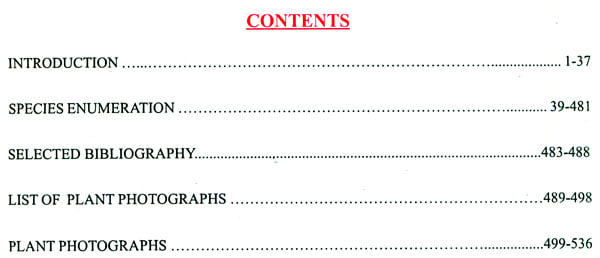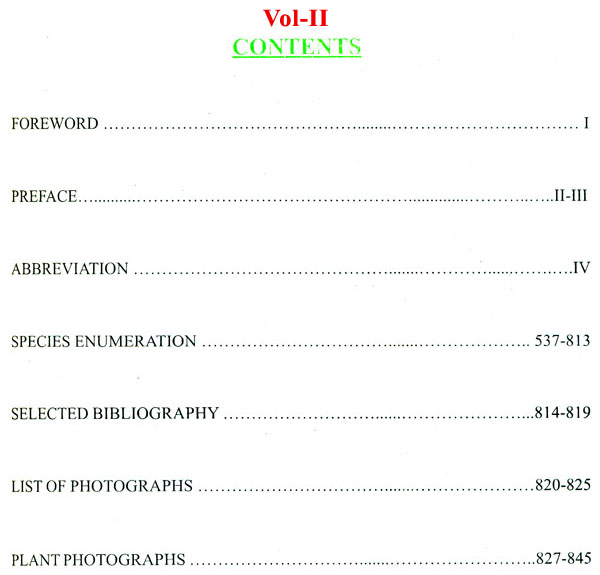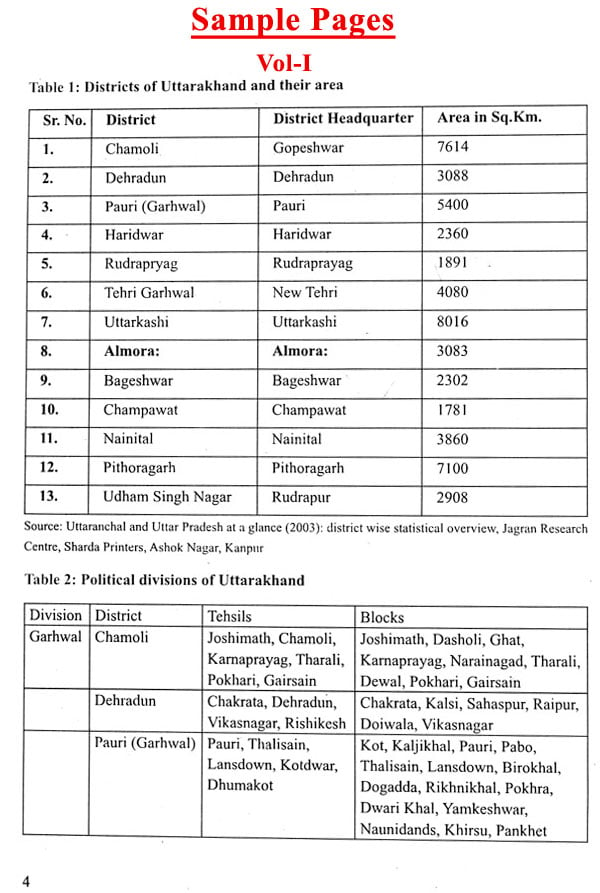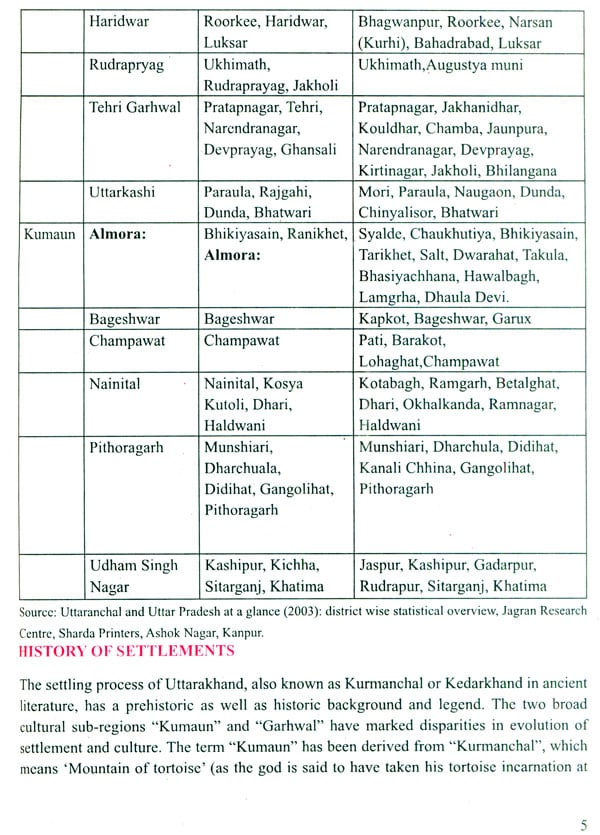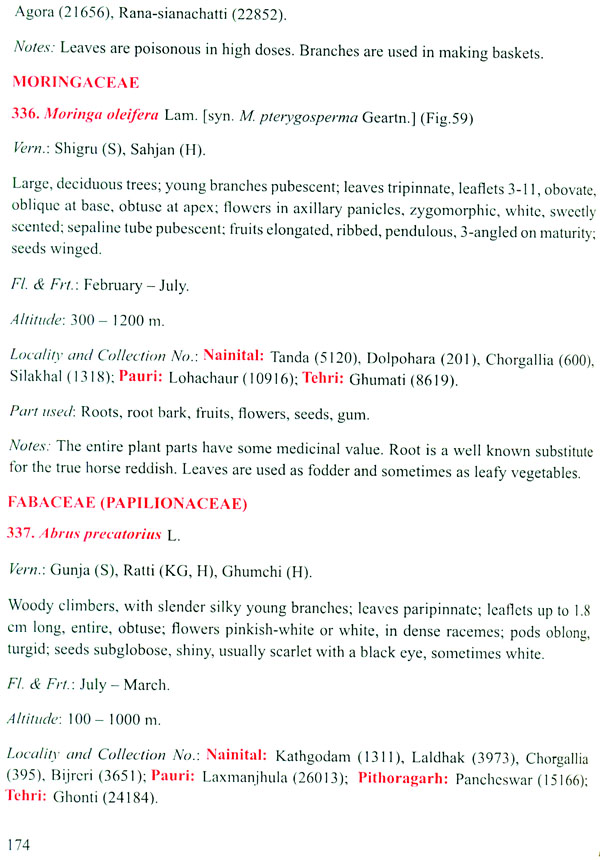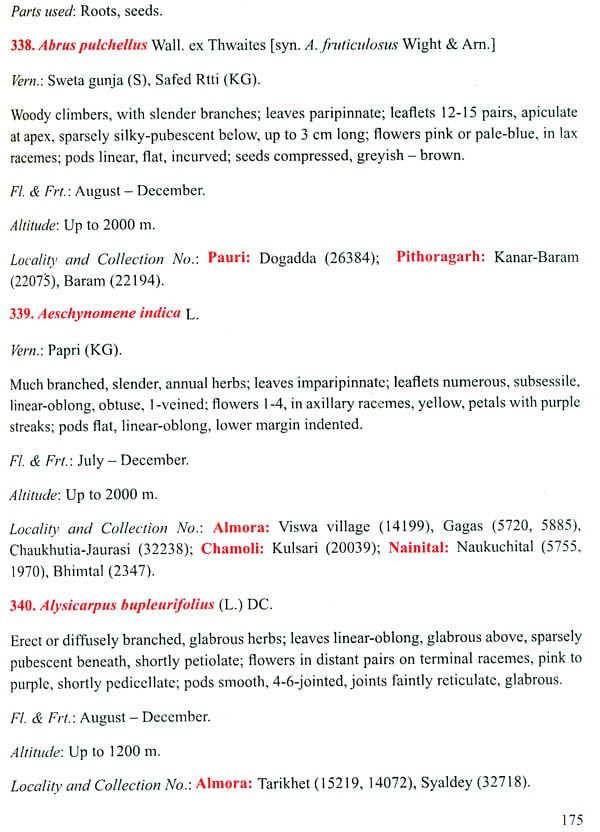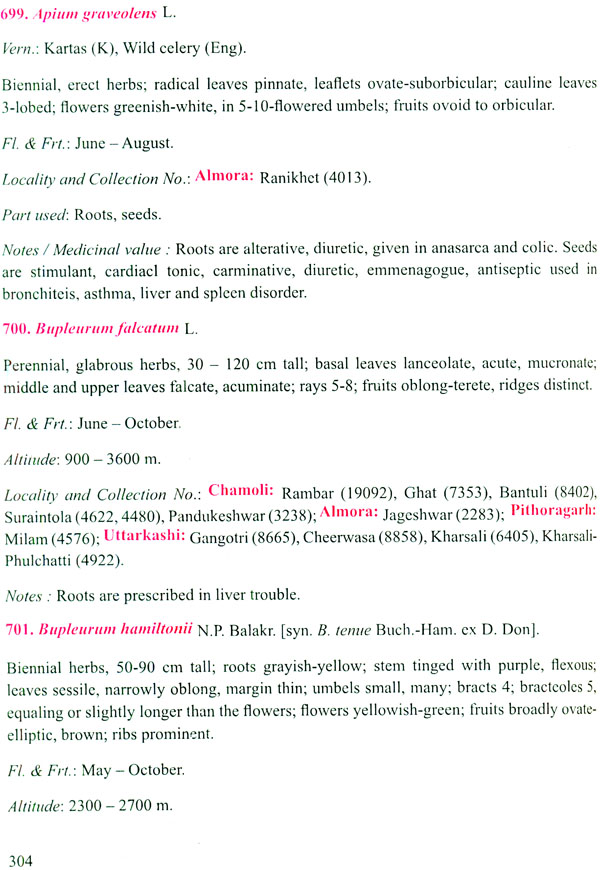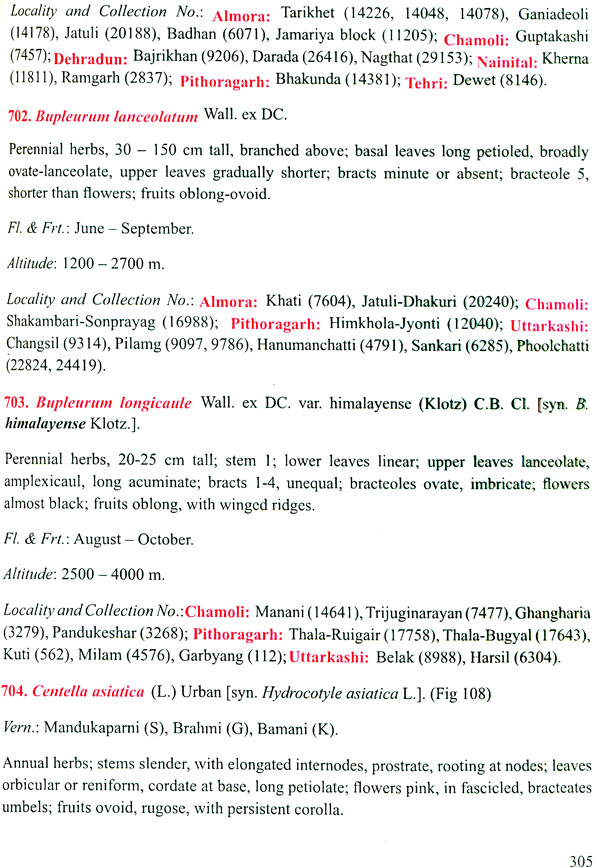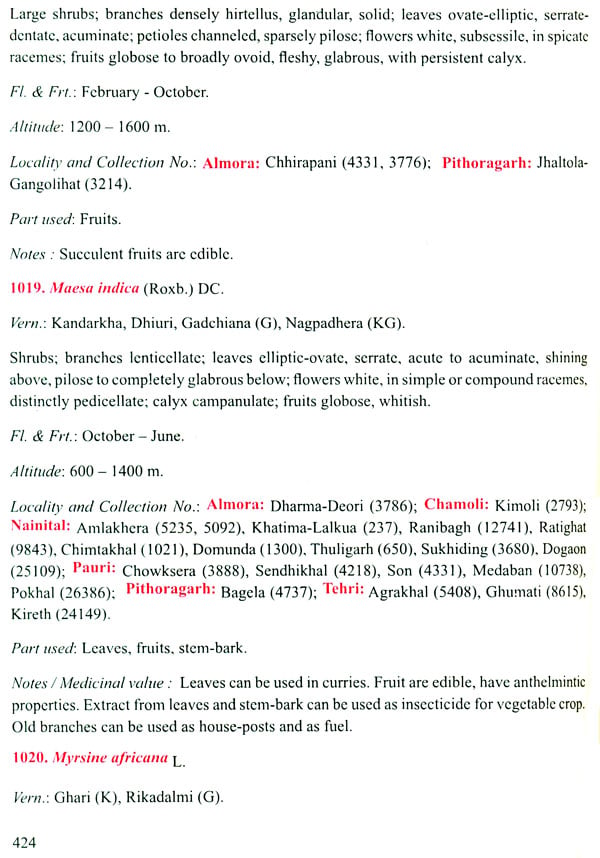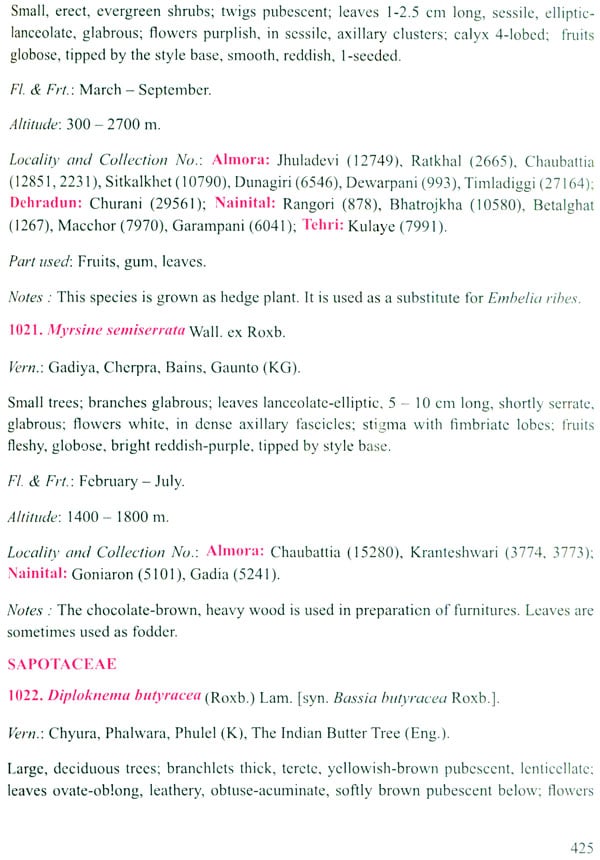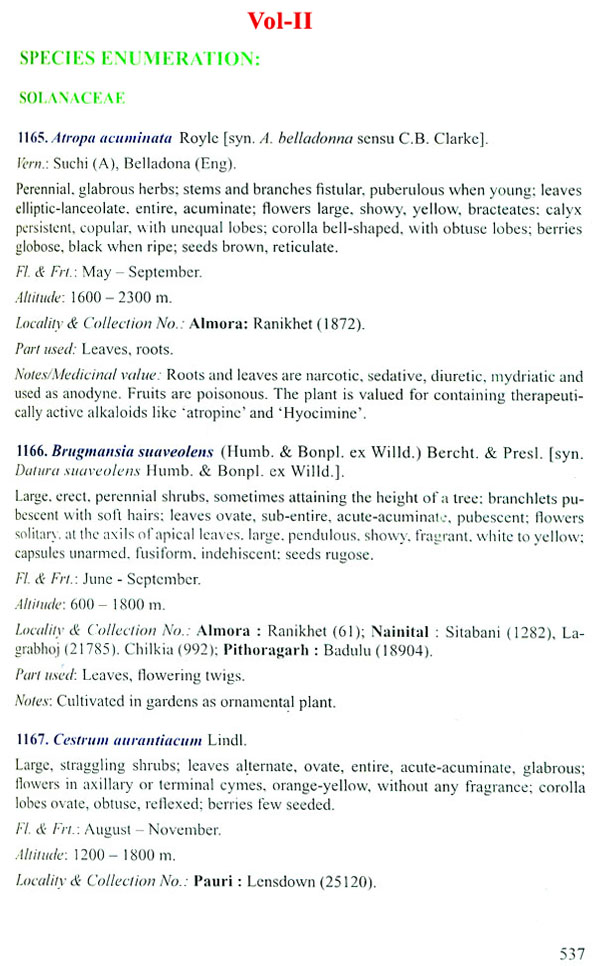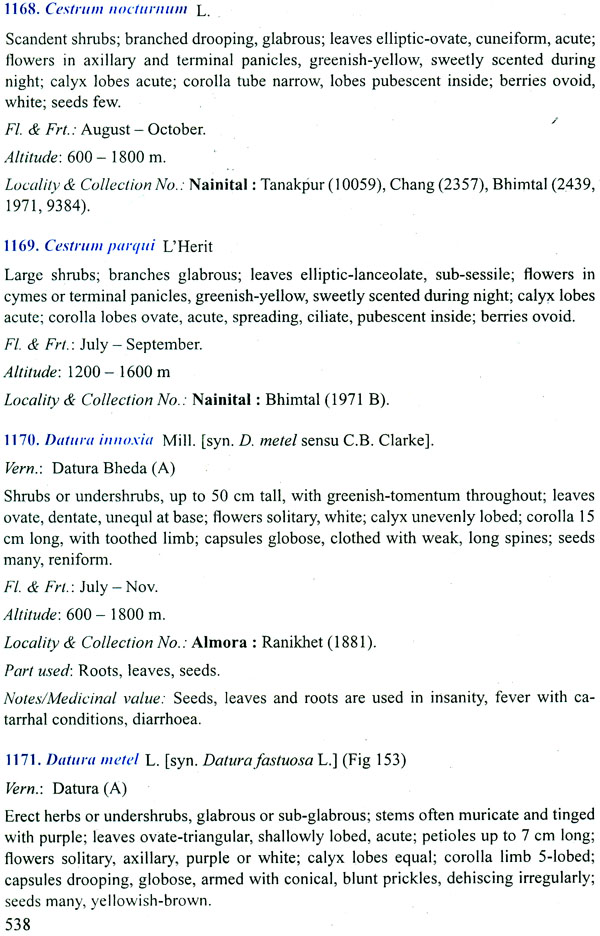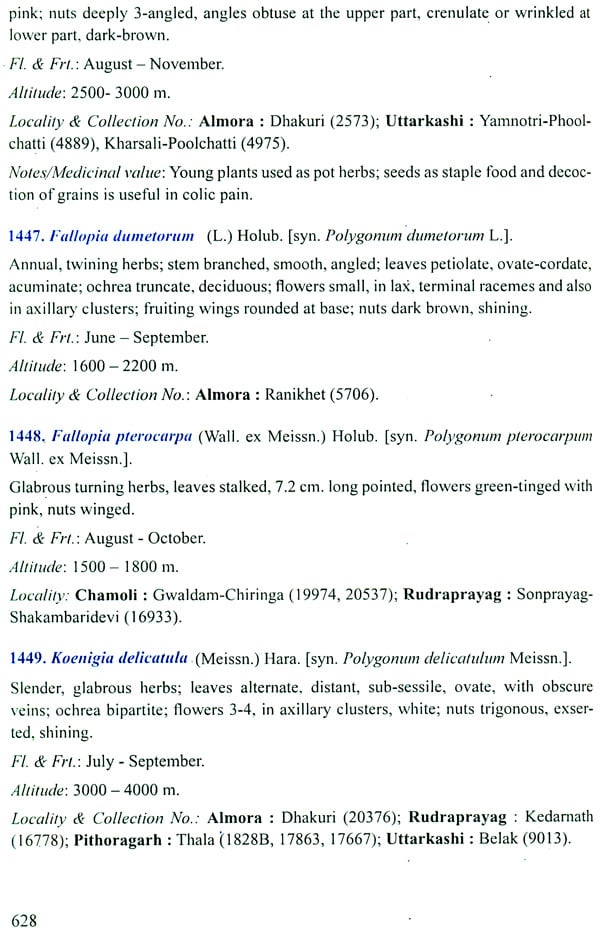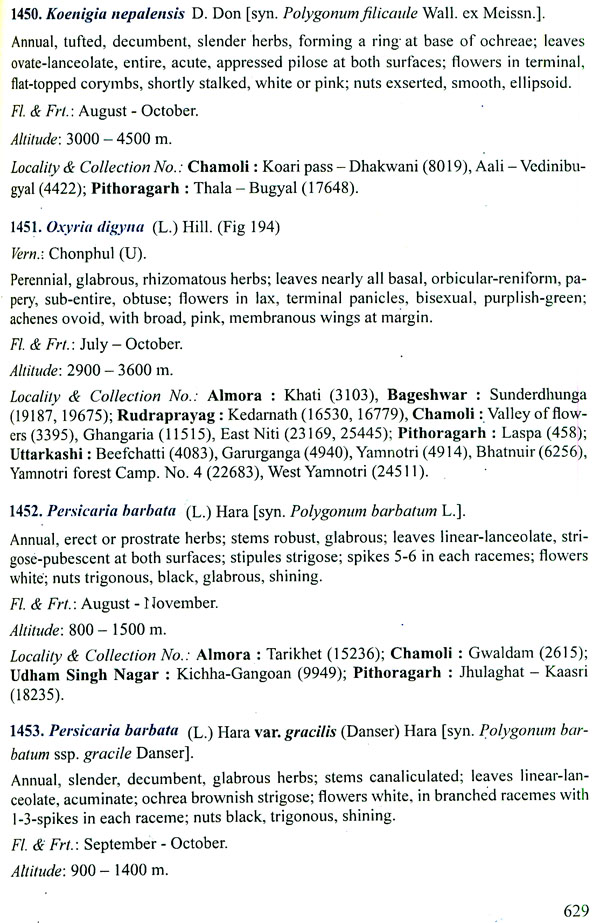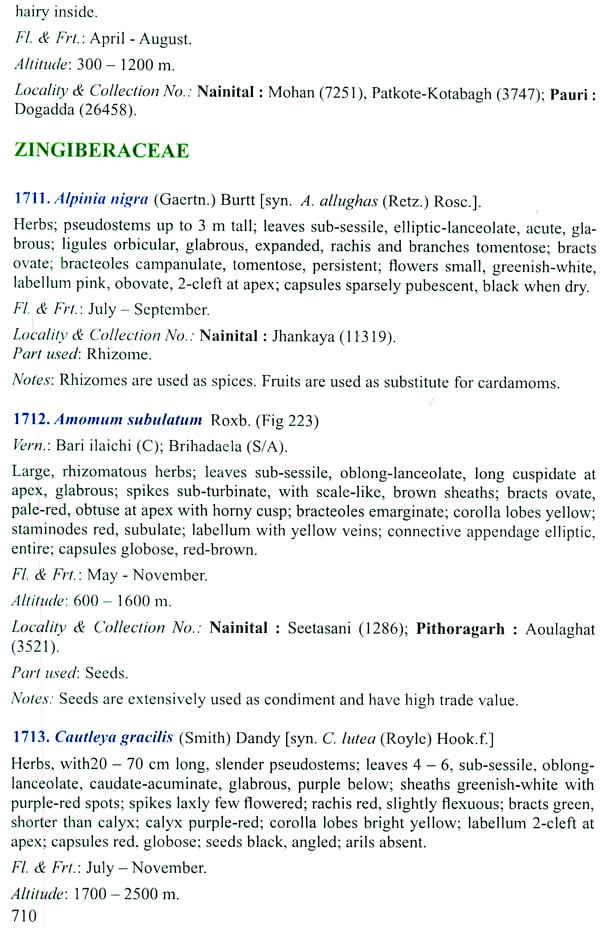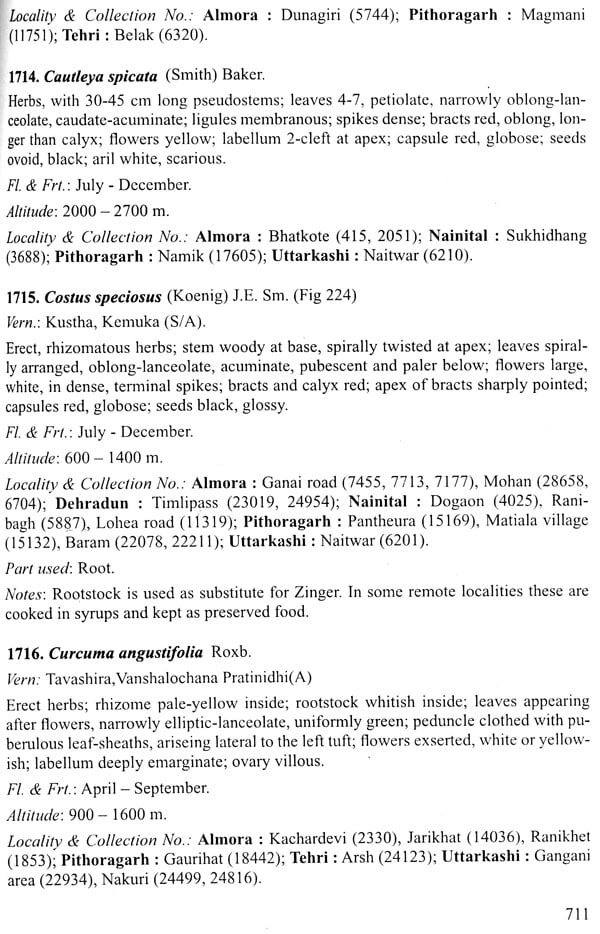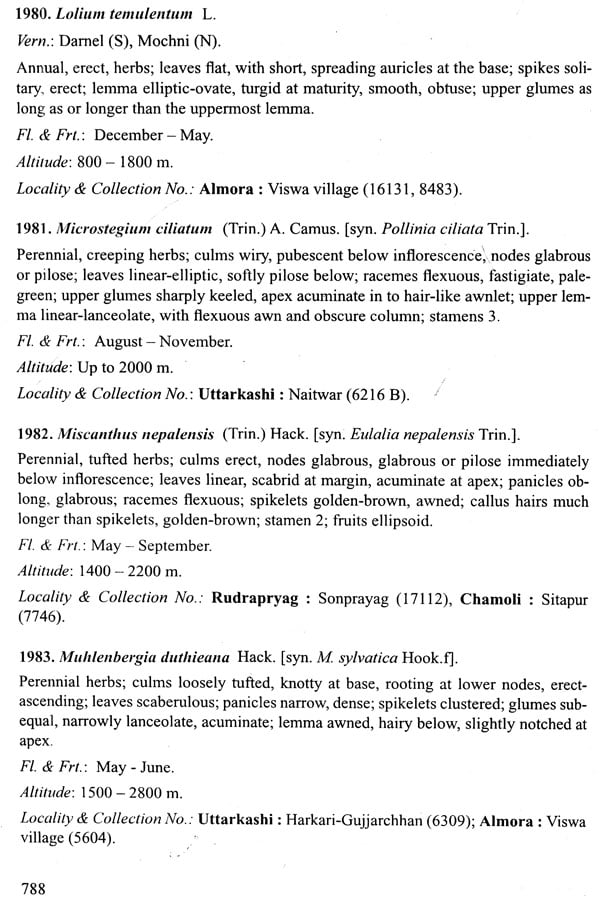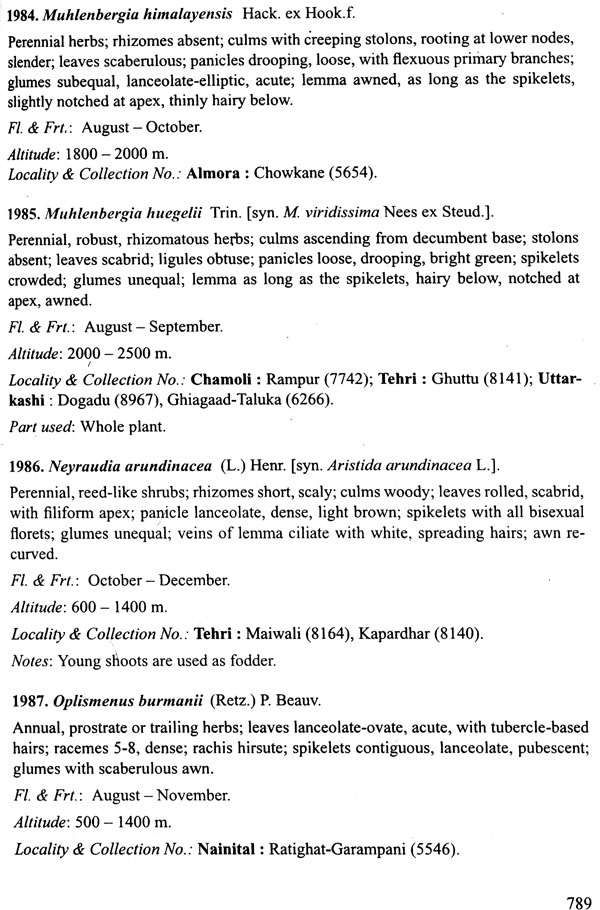
Herbal Wealth of Uttarakhand (Set of 2 Volumes)
Book Specification
| Item Code: | NAW552 |
| Author: | Prof. Abhimanyu Kumar |
| Publisher: | CENTRAL COUNCIL FOR RESEARCH IN AYURVEDIC SCIENCES |
| Language: | English |
| Edition: | 2014 |
| ISBN: | Vol-I: 9789383864072 Vol-II: 9789383864140 |
| Pages: | 889 (260 Color Illustrations) |
| Cover: | HARDCOVER |
| Other Details | 9.50 X 7.50 inch |
| Weight | 2.20 kg |
Book Description
The foremost priority that stares the biologist of today is the proper management and conservation of present day global biodiversity. This is possible only through consistent exploration and systematic recording of the various biotic entities. In this context the Himalaya represents one of the most important mega-centers of biodiversity, sharing over fifty per cent of the vegetational wealth of the Indian subcontinent. Although in the recent past there has been a deep concern and awareness for the conservation of the fragile Himalayan ecosystem. There are hardly any published floras which present prefect floristic reports from the vast terrain. This leaves the impression that only limited attempts have been made towards our understanding in this context and to a large extent we still depend on the contributions of the past century. Furthermore, unlike the past floristic works, the present day flora requires complimentary data from ecology, ethno botany, phytogeography, conservation etc.
The present monograph, retaining to the "Herbal Wealth of Uttarakhand" is an attempt towards our understanding of the diversity of seed bearing plants from this important sector of Himalaya is characterized by wide topography which shared by the upper Gangetic plain, the Siwalik ranges and the high mountainous peaks. Attempts have been made to adopt the revised and up to date nomenclature as per the international code of Botanical Nomenclature. Latest the editors have made special efforts to record local names for a large number of species. Similarly equivalent English and Sanskrit names have also been included wherever available. These local or common names are often useful in revealing the utility and value of the species.
The brief description of plants includes habit, vegetative features, inflorescence and floral characters and period of flowering and fruiting. This apart, ethno-botanical information is incorporated wherever available.
The wise management of biodiversity, both for its conservation and sustainable utilization requires base line information on different aspects of the components of biodiversity. The monograph "Herbal Wealth of Uttarakhand" prepared by the botanists of RRIHF, CCRAS, Tarikhet (Ranikhet), Uttarakhand is therefore, a welcome step in the right direction. The monograph provides an overview of various facts of the plant resources of Uttarakhand, one of the hyper diversity states of the Indian union.
I have, therefore, pleasure in commending the repository of holistic information of Herbal Wealth and allied aspects of plant identification, nomenclature, utilization, etc. to the attention of all those interested in any way in the plant wealth of Himalaya. I also hope that this will provide enough incentive for publication of other Monographs of similar nature. I am sure it will serve as an important reference book for all those having stake in the plant resources of the State.
India is a signatory to the "Convention on Biological Diversity" with the main objective of conservation and sustainable utilization of its biological resources. In order to regulate the exploration and commercial exploitation of bio-resources of our country, to prevent bio-piracy and to safeguard our traditional knowledge in the form of Intellectual Property Rights (IPR) the government of India has formulated the "Biological Diversity Act 2002" and "National Environment Policy, 2005". For successful implementation of the above acts and to frame a strategy for conservation and sustainable utilization we must know our biological diversity and the traditional knowledge associated with it. Medicinal plants play important role in the primary health care of majority of Indian population. With the recent shifting of focus towards alternative systems of medicine, the demand for medicinally important plants or plant parts has increased many folds by the practitioner and pharmaceutical Industry. CCRAS the apex body of Ministry of AYUSH, Govt. ofIndia, New Delhi has been engaged in exploring and documenting the Medico- Botanical potential across the Country starting from the alpine snow covered Himalayan region to the sea line at the coastal areas including the Andaman and Nicobar Islands and Laksha Deep.
Uttarakhand, one of the youngest state of the Indian Union was carved of Uttar Pradesh on 9th November 2000, has about 64.8 percent of its area under forest cover. The varied topography and climatic conditions met within the state are coterminous with a very rich biodiversity encountered here, both plants and animals. However, our information about the plant resources of the state is widely scattered and incomplete. This monograph therefore, is an attempt to increase our understanding and information level on plant diversity of the state, particularly with reference to the medicinal properties. It provides the state of the art information on the status of different taxonomic group of plants occurring in Uttarakhand. In this monograph, information on folk-lore, ethno-medicine and traditional medicine has been provided.
Identification of the drug will remain the prime difficulty until prominent characteristics of each drug are well established. The only way in which this can be done is to collect, characterize, identify and preserve plant specimens in herbaria for further comparative studies.
The drugs mentioned here are numerous, owing to the rich floristic diversity of the state and considerably vary in their characteristics. With the obscure descriptions in the old literatures, it is very difficult to say whether the drug in actual use is the one described. Verbal descriptions given in old books are inadequate to the botanist for identifying plants or parts of plants and there has been a good deal of confusion in vernacular names. The same drug is sold under different names; alternatively different drugs are sold under the same name in different regions of India. In many cases even learned practitioners of indigenous medicine are unable to say with certainty whether a particular drug is the same as the one prescribed in old text.
The monograph is an assimilation of information contained in numerous published as well unpublished reports and the herbarium of the RRIHF, CCRAS, Tarikhet (Ranikhet), Uttarakhand. It is hoped that it will serve as a useful guide and ready-reckoner for various components of flora of the State.
The Council appreciates the sincere efforts of the survey teams and staffs ofRRIHF Tarikhet in extensive exploration work at difficult areas of Uttarakhand and preservation of large number of herbarium and museum specimens for future reference. Forest Officers and District administration of undivided Uttar Pradesh and present Uttarakhand are thankfully acknowledged for their support and help during the survey tours.
All the plants have many and diverse uses which have a direct or indirect bearing on the civilization of human society. India is a vast country abounding in plant wealth and therefore, it is very important to utilize these plants resources for the welfare of the country men. The late Prime Minister Pandit Jawhar Lal Nehru appropriately wrote in his forward to the first volume of Wealth of India (1948) "Never the less, India is wealthy and the wealth of India is there, but in spite of this wealth the people are poor. The problem for us is to utilize this stored up wealth of the country in the soil and under the soil for the benefit ofIndian humanity". His remarks are very significant because, though the country is very rich in its plant wealth, the information about them, particularly the medicinal plants is rather insufficient. The exact data such as the distribution of the medicinal species in the country, there relative abundance, flowering and fruiting time, ethno botanical uses and other such information which can not be deduced from the inspection of herbarium specimens are not only necessary but should be based on more thorough and systematic field study, so that plants can be exploited for human welfare, particularly for there therapeutic utility to combat many of the diseases and conditions. The present work "Herbal Wealth of Uttarakhand" is based on this rational and provides the result of extensive .field studies and literature research undertaken by survey team of Medicinal Plants Unit of the Regional Research Institute of Himalayan Flora, Tarikhet, Uttarkhand has been supposed to be the adobe of Gods from the time immemorial. It has always exercised a spell over poets, painter, sages; saints find mention in the prehistoric era and in the ancient religious books. The western scholars often call it "The Palestine and Jerusalem of India" as there are many famous shrines and temples on the peaks and dales of this land. It has been the cradle of everything precious in India's heritage. The perennial streams which determine the economy of the entire country have their origins in this state. The sky-scaling snowy peaks, valleys full of green vegetation, the forest, the medicinal plants, the mineral wealth and varied fauna has always been great attractions to the pilgrims, tourists, traders, explorers, naturalists, historians and curious travelers who are keen to know and see more internally its varied tapestry of colour and scenic excellence, Kalidas, the great Sanskrit poet of ancient India has described the Himalaya in "Kumarsambhava" as the soul of God, full of natural wealth. He describes:
**Contents and Sample Pages**
